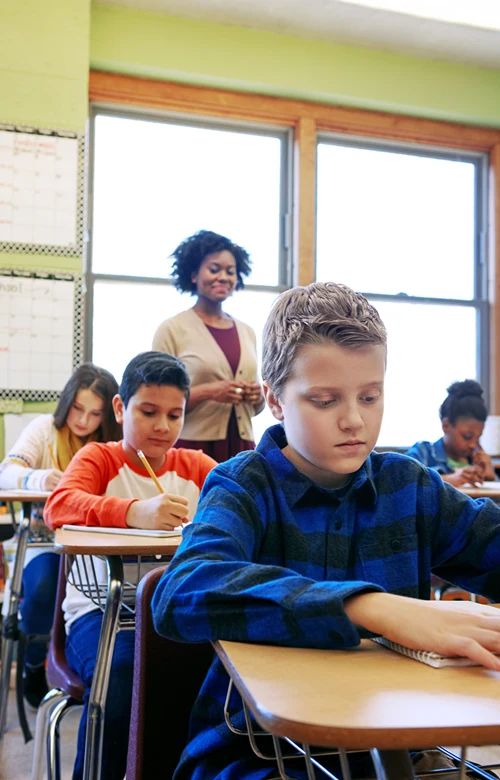Leading Private Options for Gifted Learners
Gifted learners are exceptional in their ability to grasp concepts quickly, think critically, and apply creativity to problem-solving. Yet, traditional educational systems often fail to meet their unique needs, leaving many of these students under-challenged or disengaged.
To truly nurture their potential, an increasing number of parents are turning to specialized private institutions designed to cater to high-ability students. These schools offer individualized programs, advanced curricula, and enriched learning environments that help gifted learners thrive academically and emotionally.
Understanding the top private options available can help parents make informed choices for their children’s education.
1. Why Gifted Learners Need Specialized Private Education
Gifted students are not just faster learners, they often think in complex, abstract ways that demand deeper exploration of topics. In a traditional classroom, where instruction is aimed at the average student, gifted children may feel bored or frustrated. They require intellectual stimulation and opportunities to explore subjects beyond the standard curriculum.
Private schools designed for gifted learners provide this through flexible programs and smaller class sizes. Educators in these institutions are trained to recognize and cultivate unique talents, offering personalized learning paths that allow students to work at their own pace. These environments also promote creativity, curiosity, and leadership, qualities that are vital for success beyond academics.
Furthermore, many of these schools offer mentorship programs and real-world learning opportunities that prepare students for future innovation and leadership roles. Such exposure not only keeps them intellectually engaged but also helps in developing emotional intelligence and social skills.
2. Key Characteristics of Leading Private Schools for Gifted Students
What makes a private school stand out for gifted learners is not only its curriculum but also its philosophy toward education. Here are some defining characteristics of these leading institutions:
- Personalized Learning Plans: Each student’s academic path is tailored according to their strengths, weaknesses, and interests.
- Advanced and Accelerated Courses: Many schools allow students to move beyond grade-level content, offering early access to advanced placement (AP) or college-level classes.
- Creative and Interdisciplinary Learning: Subjects are often taught through projects that connect multiple disciplines, encouraging critical thinking and innovation.
- Focus on Emotional Intelligence: Social-emotional development is prioritized alongside academic growth, helping students manage the pressure that can accompany high achievement.
- Mentorship and Research Opportunities: Many schools partner with universities or industries to give students hands-on research experiences.
These characteristics enable gifted students to thrive not just academically but also personally, nurturing their curiosity and self-confidence.

3. Types of Private Institutions Serving Gifted Learners
Private education for gifted learners is not one-size-fits-all. Various institutions specialize in different aspects of gifted education, providing parents with diverse options depending on their child’s strengths and learning preferences.
- Gifted-Only Academies: These schools exclusively admit students identified as gifted, offering an intellectually stimulating environment where learners can challenge one another.
- Independent Private Schools with Gifted Programs: Many prestigious private schools have designated gifted tracks or honors programs within a broader academic setting.
- Specialized STEM and Arts Schools: For students with a strong inclination toward science, technology, engineering, math, or the arts, specialized institutions provide advanced resources and focused training.
- Schools for Twice-Exceptional Learners: These schools support students who are both gifted and have learning differences, such as dyslexia or ADHD. This category includes private schools for dyslexic kids, where educators are skilled at balancing enrichment and support simultaneously.
Each of these institutions provides tailored resources and a community that understands and appreciates gifted learners’ needs, ensuring that their intellectual and emotional growth align harmoniously.
4. Benefits of Choosing Private Education for Gifted Students
Private schools offer numerous benefits that make them particularly suitable for nurturing giftedness. The flexibility and focus on individuality often translate into significant academic and personal development.
- Individual Attention and Smaller Class Sizes
Gifted learners thrive when teachers can focus on their specific needs. Smaller class sizes allow for personalized feedback and more meaningful interactions with educators.
- Enriched Curriculum and Learning Freedom
Unlike rigid public school curriculums, private schools offer flexible learning paths, often allowing students to dive deeper into topics they are passionate about. This approach fosters lifelong learning habits.
- Exposure to Like-Minded Peers
Gifted learners often struggle socially in traditional settings. In private schools, they find peers who share their curiosity and passion for learning, creating a stimulating and supportive community.
- Emotional and Psychological Support
Many private institutions have in-house counselors and specialized programs to help students navigate the emotional complexities of giftedness, such as perfectionism, anxiety, or self-doubt.
- Opportunities Beyond the Classroom
Extracurricular activities, internships, and competitions offered by private schools further enhance students’ real-world skills, preparing them for higher education and leadership roles.
5. How to Choose the Right Private School for Your Gifted Child
Selecting the right institution requires thoughtful consideration of your child’s abilities, interests, and temperament. While academic excellence is important, parents should also evaluate the school’s environment, teaching approach, and support systems.
When researching potential schools, consider the following factors:
- The school’s philosophy and approach to gifted education.
- Qualifications and experience of faculty members.
- Availability of enrichment programs and extracurricular options.
- Student-to-teacher ratio and individualized learning opportunities.
- Emotional and social support structures for gifted or twice-exceptional learners.
- Feedback from alumni and current parents about student experiences.
Visiting the campus, attending open houses, and speaking directly with educators can help parents get a realistic understanding of how well the school aligns with their child’s needs.
6. Prominent Private Institutions for Gifted Education
Around the world, several private schools have earned a reputation for excellence in gifted education. Some of the most notable include:
- The Davidson Academy (Nevada, USA): Offers an advanced curriculum specifically designed for profoundly gifted learners.
- The Mirman School (California, USA): Focuses on experiential learning and critical thinking for gifted children from elementary through middle school.
- The Roeper School (Michigan, USA): Emphasizes humanistic education and self-directed learning.
- Gilgen International School (Austria): Combines academic rigor with creativity and global citizenship.
- Landmark School (Massachusetts, USA): Specializes in supporting students with learning differences while nurturing their intellectual strengths.
Each of these schools demonstrates how private education can empower gifted learners to excel in both academics and personal growth.
Conclusion
Gifted learners deserve an educational experience that challenges their intellect, encourages curiosity, and supports their emotional well-being. Leading private schools for gifted students offer these advantages by combining rigorous academics with individualized attention and creative freedom. From personalized learning plans to opportunities for research and innovation, these schools create environments where gifted minds can flourish.
For parents seeking the best fit, exploring private options tailored to gifted education can be a life-changing decision. The right school can unlock a child’s full potential, laying a strong foundation for lifelong learning, achievement, and self-fulfillment.














